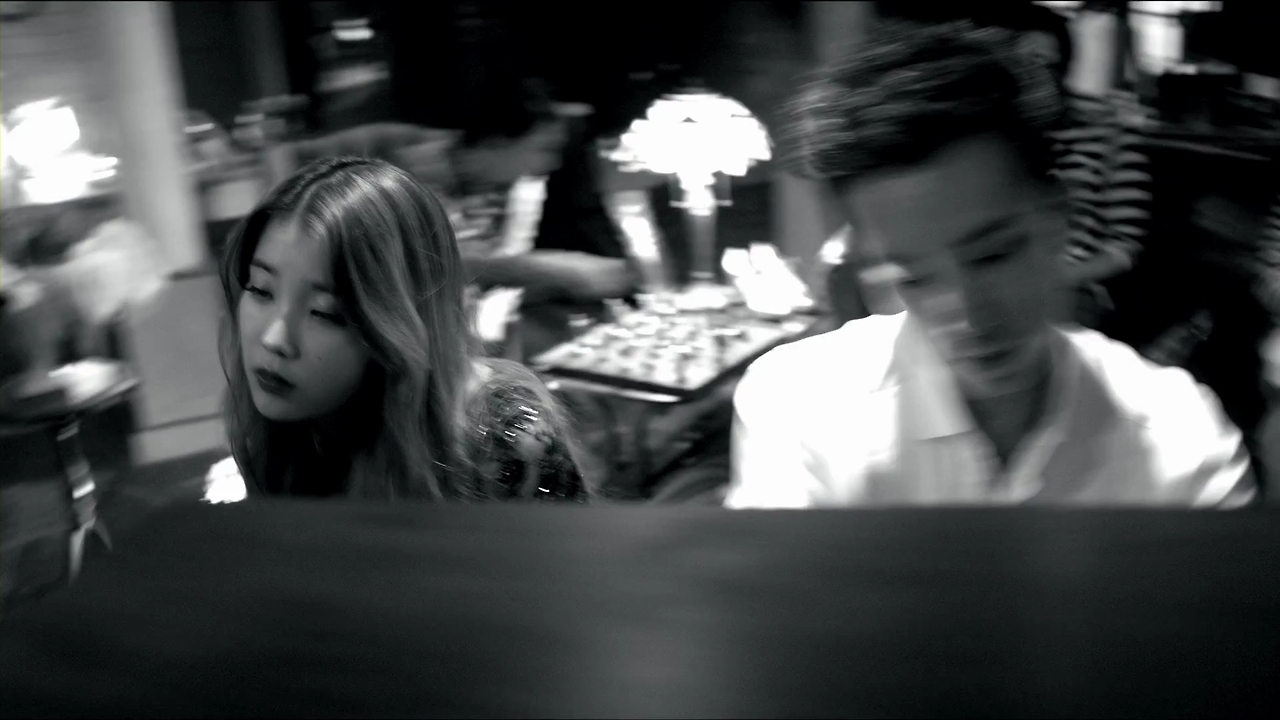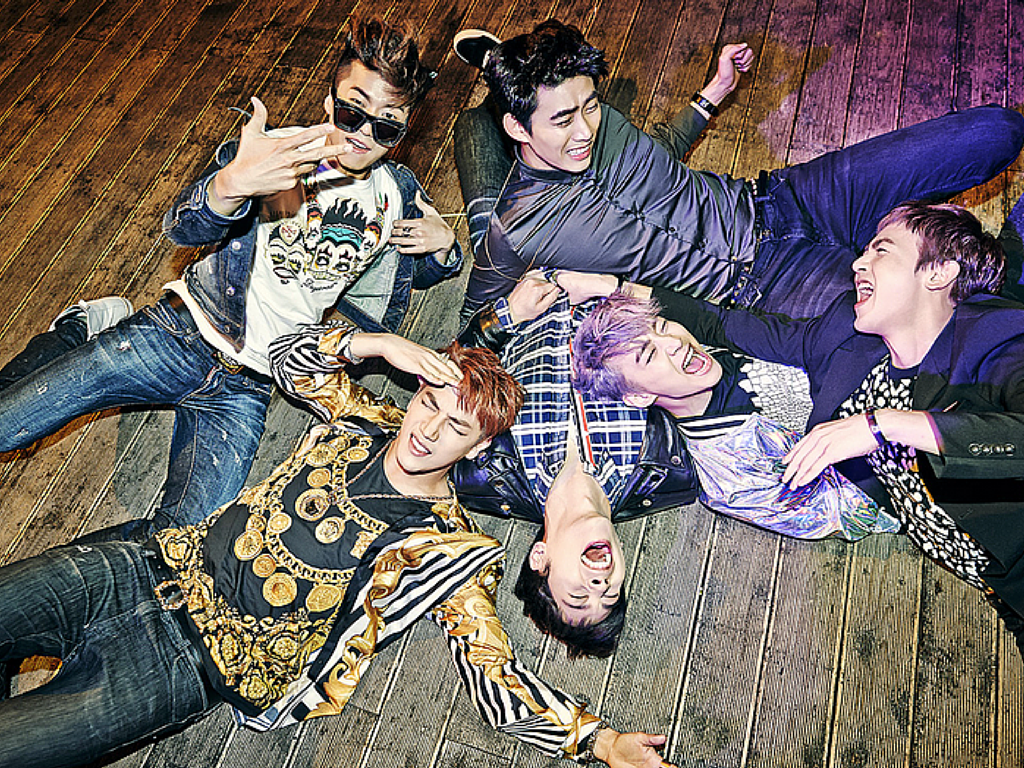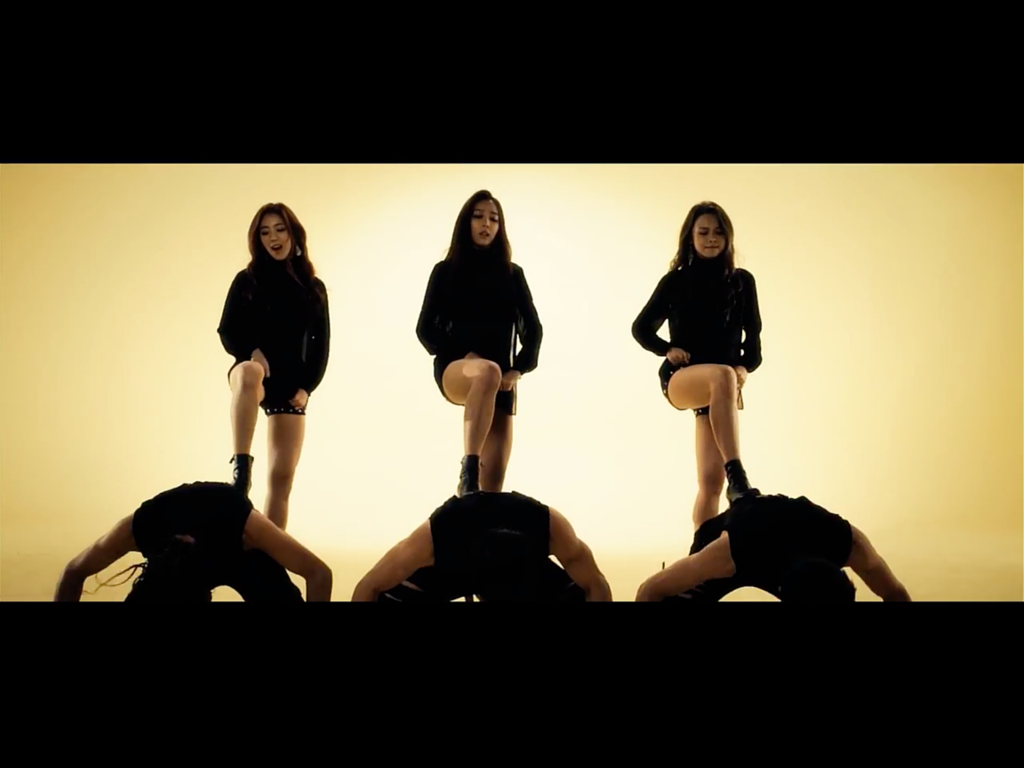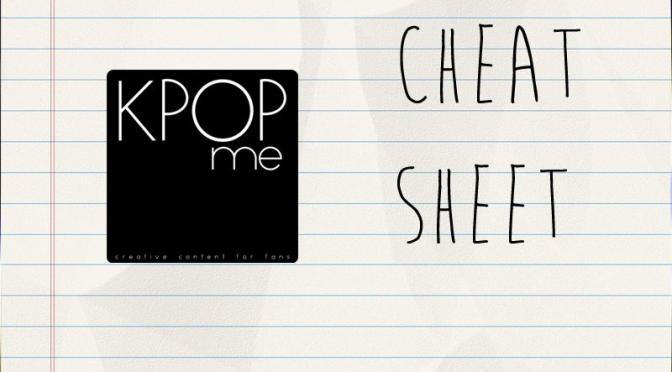IU’s Red Shoes: A Torment or Saviour?

A man picks up a film reel entitled “The Red Shoes.” He splices film stock and sticks it together. Viewing his edited footage he sees black and white images of a woman walking onto a stage and a pair of red shoes followed by a title card that reads: “Would you take me there?”
A smartly dressed gentleman smokes a cigarette and orders a champagne cocktail. A flame haired woman in a beautiful gown copies his order. He asks her, “Why do you want to dance?” She responds, “Why do you want to live?”
These two fragments of stories occur in two different productions with the same title: “The Red Shoes.” The first is from the 2013 music video for K-pop starlet IU’s single. The second is a scene from Michael Powell and Emeric Pressburger’s melodramatic classic from 1948. Few obvious similarities come from those two extracts, yet with a bit of work we can learn how IU channeled these British filmmakers for her own art. It also gives great insight into a time when her artistry and intentions have been brought into question. 2015 has been IU’s most turbulent year in the K-pop industry so far. Much of her work was focused on audience reactions to her and it did not go down well, to say the least. “The Red Shoes” shows us that that will be of little concern to her going forward.
Also on KultScene: Bastarz, Jean Vigo, “Zero For Conduct,” & Internal Rebellion
Written and produced by powerhouse duo Kim Eana and Lee Min Soo, IU’s “The Red Shoes” tells the story of a woman lost in her world, hoping for summertime and her love to return. The film “The Red Shoes” follows Victoria Page as she tries desperately to become the greatest ballerina there ever was. Thanks to the impresario of Ballet Lermontov, Boris Lermontov, her goal comes into view. Her true desire is put into question, though, as he makes her choose between love and dance.
The opening of IU’s video clearly places it within classic film territory, but the similarities do not end there. The musical theatre aesthetic and dancing red shoes (naturally) are clear examples. Even the group of men IU plays with can be traced back to the group of men who make up Lermontov’s creative team of choreographers, composers, and designers. Most interesting, however, is how they both adapt the story of “The Red Shoes.” The original story is a fairy tale written by Hans Christian Andersen about a young girl who acquires red shoes that make her dance and dance until her feet must be amputated. Powell and Pressburger’s “The Red Shoes” uses this story within the film as the main ballet that Page performs while also connecting with it metaphorically as the tale seems to come true for her.
In a sense this is what IU also does with the film. Her song is not a straight adaptation and the video and lyrics do not take the same story but rather continue the theme. In the film, the infamous red shoes were seen as a torment, objects that mirror the destructive obsession within a person. For IU and Kim Eana however, they are seen as saviours. She slips into the red shoes as she sings, “If I count this as destiny, if I choose my own destiny”. It is not until she puts them on that she can break free of her monochrome world and take the projectionist by the hand and lead him to endless dancing and music.
IU is wilfully taking the obsession of the shoes onto herself. She is not scared of being consumed by the music. If she can dance and sing for the rest of her life, she will. She spurs on the shoes with Lee Min Soo’s big band swing music and her “oompa loompa dooms.” References to repeating stories of love and her chorus refrains of “again, again” show IU’s commitment to music. Intriguingly the song leaves behind the red shoes in favour of pink shoes. IU sings as she puts on the new shoes, “They say you can go to better places if you wear better shoes.” Like Powell and Pressburger did with Andersen’s story, IU brings “The Red Shoes” further. Not only is she comfortable being obsessed, she wants more and she wants something new.
The comfort does not last however.The black and white world starts to creep back in. The red shoes chase after IU before finally attaching themselves to her again. This move mirrors the concluding events of the film. In it Page is forced into an ultimatum by Lermontov and her boyfriend, Julian Caster, about whether to dance or go home with Caster. In a state of panic she is seemingly forced by the shoes to run out of the building and to throw herself in front of a moving train. It is an altogether more bleak look into the theme than what IU has given us, yet the similarities are clear. IU is aware that living in a constant state of creativity is not good for a person. Responsibilities pull us out of this fantasy world.
Also on KultScene: ’20 Once Again’ vs. ‘Miss Granny’: Which One Is Better?
This maturity is what helps the song from falling into pure indulgence. It shows foresight into IU’s more recent work and how people have reacted to it. The push and pull of idol and civilian life was clearly on IU’s mind but the thoughts of others were not a concern for her. By the time 2015 came around though she could not ignore what her audience thought of her. Her work on her album “Chat-shire”, written exclusively by IU, shows her directly commenting on her muddled identity as a young woman in the spotlight. “The Red Shoes” seemingly warned her about this, “The girl with the brown hair looked for her path, Fell in love again and lived happily, A story that has been re-written from the beginning.” Telling us that we have heard this story before, she says, look deeper. IU can see what’s coming. It happens to many female artists who try something different. Who dare to leave their comfort zone.
The enigmatic Boris Lermontov informs us of how to really understand IU, “The music is all that matters. Nothing but the music.”
This is what ultimately matters in the end. IU is a musician. What she has to say is in her music. If it is that which has brought her all of this hate than so be it. It is the risk we take when creating. It is the risk we take when we put on the red shoes.
“The Red Shoes” heralded in the next stage of IU’s career. Her move from a cute idol with a great voice into an artist was highlighted by her use of a classic film. While it is not strictly her work, her continued collaboration with Eana and Min Soo is clearly a huge influence on her later work. The parallels between IU and Victoria Page are apparent enough that it is not likely this would have worked with many other female idols as well. IU’s insatiable desire for music has not wavered. All the hate in the world will not stop her. She will keep on dancing, red shoes or not.
What do you think of the comparisons made here? Also what do you think of IU’s recent controversies? Share your thoughts in the comment section below and be sure to subscribe to the site and follow us on Facebook, Twitter, Instagram, and Tumblr to keep up with all of our posts.










